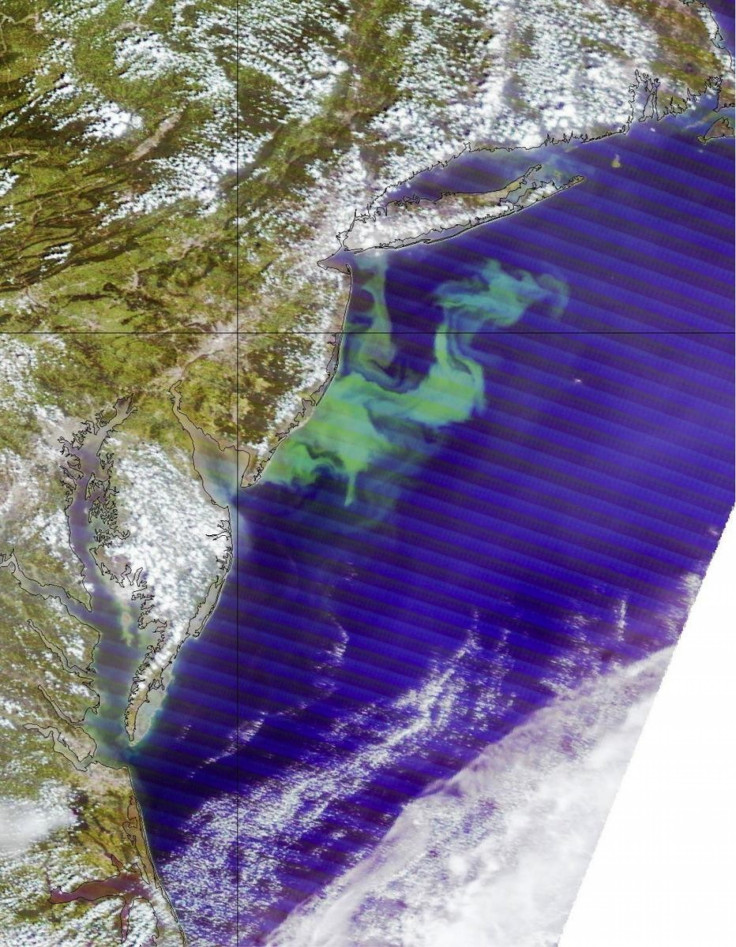NOAA Releases Startling Image of Monster Algae Bloom Almost the Size of New Jersey

A large algal bloom extending from Montauk, New York to Cape May in New Jersey, has been detected by the National Oceanic and Atmospheric Administration (NOAA) satellite imagery as having the potential to threaten the existence of marine life in the region.
The dramatic phytoplankton bloom, almost the size of New Jersey, could even affect fishing and travelers in the area. Scientists and researchers are speculating the possible impact of the bloom as die-offs and decays of the microscopic species may lead to usage of oxygen vital for the survival of the marine life.
A bloom of this magnitude is cause for great concern. When the algae settles to the seafloor, its decay uses up oxygen, which can harm aquatic life and can even lead to fish kills, the Atlantic Highlands Herald quoted Heather Saffert, Staff Scientist for Clean Ocean Action saying.
On an average, decrease in the dissolved oxygen content below 5 mg/liter can harm the existence of aquatic organisms.
It has been reported that the bloom has been caused by an unfortunate combination of southwesterly winds that led the upwelling of nutrient-rich waters to come to the surface. This upwelling provided the much-needed food for the algae, causing them to multiply rapidly.
These types of blooms are naturally occurring. They are caused by a consistent pattern of offshore winds that allows deeper, nutrient-rich water to push nutrients higher in the water column. The algae do not pose a threat to beaches or water quality. The DEP is monitoring, Newsroom Jersey reported DEP spokesman Larry Hajna stating on Friday.
However, Jeff Tittel from the New Jersey Sierra Club does not seem to concur with his opinion. He believes that the bloom is a reflection of failed government policies. He says that although the algae are harmless, their decay could lead to the death of thousands of vital marine life in the area.
© Copyright IBTimes 2025. All rights reserved.





















